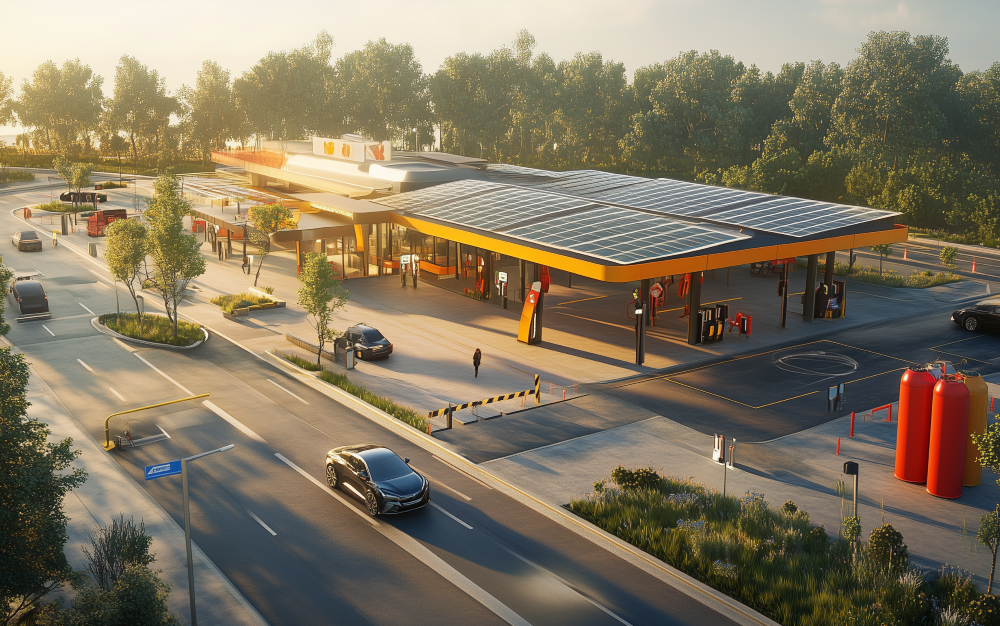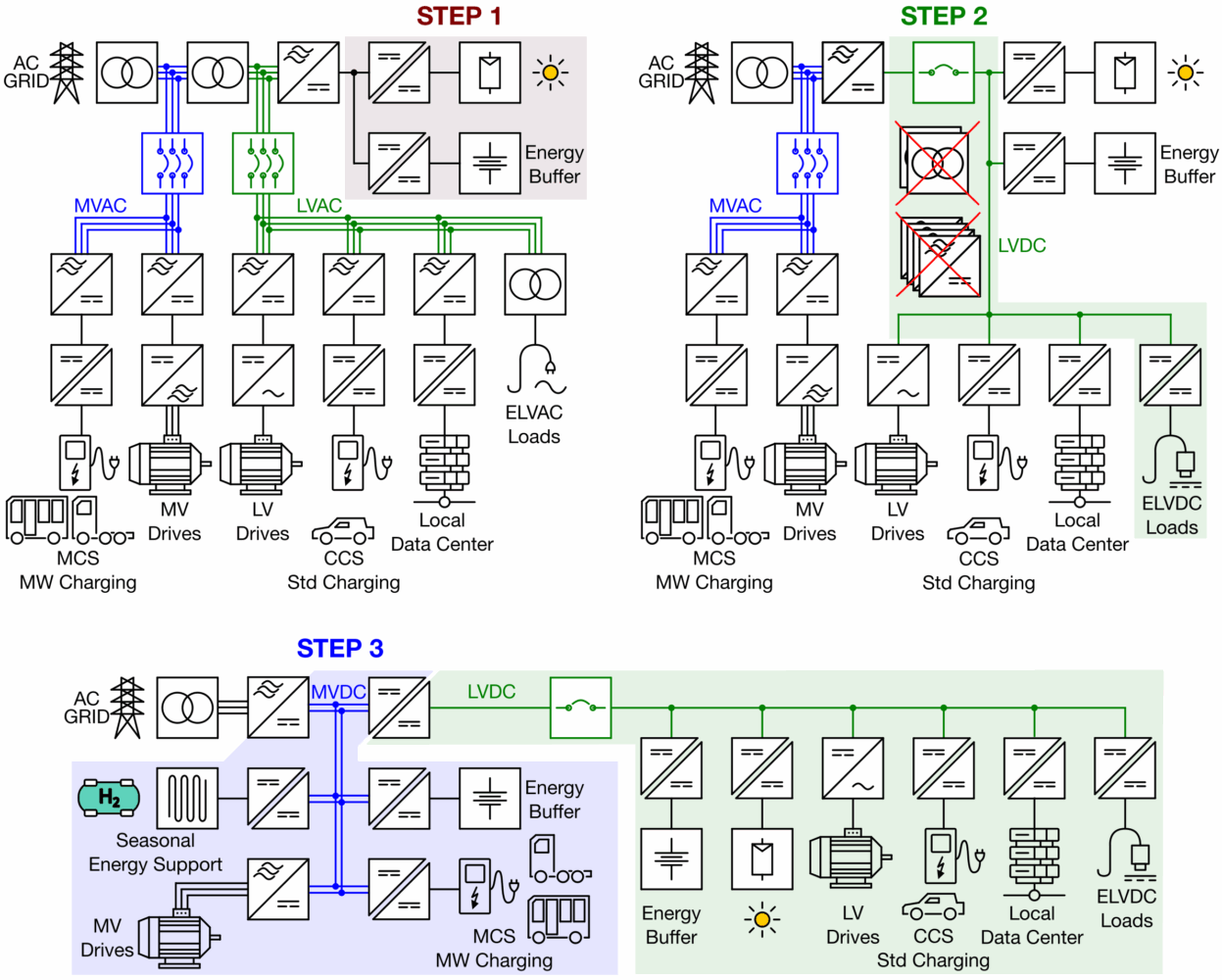During an ECPE conference on medium power that I had the opportunity to attend in Freiburg, Germany, we were able to visit the Fraunhofer Institute for Solar Energy Systems ISE. We discussed future European regulations on carbon emissions and individual transportation. There, a new reality bacame clear to me: if the whole of Europe switches to electric vehicles, service stations on highways and in shopping centers will have to adapt drastically in several ways:
- Chargers will replace pumps, which is fine so far.
- But since electric vehicles take longer to charge than combustion engine vehicles, current gas stations will need more chargers than pumps.
- Parking spaces will also need to be adapted, as users will take advantage of the opportunity to grab a coffee, do some shopping, or stretch their legs. But so far, so good.
- To charge a vehicle in around 20 minutes—which is considered fast—each charger will need to deliver at least 100 kW of power. And that’s where it starts to get complicated.
The problem does not stem directly from the power installed per charger, but rather from the size of the electrical infrastructure needed to install, say, 50-100 chargers for a medium-sized station. It should be noted that the peak power required to charge all these vehicles in a reasonable amount of time, say less than an hour, certainly cannot be provided by the network infrastructure. nThe difficultiy does not necessarily come because of the availability of energy sources themselves, but rather because of the size of the new transformers that would need to be installed, as well as the capacity of the power lines. Another aspect is land use planning, which will probably not allow for an increase in floor space.
For an installation that does not require an increase in the current infrastructure and is not likely to be overwhelmed by demand, stations will have to become electrical energy storage centers. This type of solution will need to include a variety of supply sources and different types of energy buffers. Storage for less than five minutes can be achieved using supercapacitors, daily or even weekly storage can be achieved using chemical batteries, and finally, seasonal storage, which is currently typically achieved using hydraulics, will have to be achieved using hydrogen or compressed air, as proposed by the Swiss company Enairys.
A vision for the future of these stations will likely see massive use of solar panels. Reserve spaces for gasoline will probably be converted into electrical storage spaces. Trucks will bring in reserves of green hydrogen to be converted into electrical energy by fuel cells. Ultimately, usage patterns will also change, because if each charge means taking some time for oneself, it will be an opportunity to run a quick errand, go for a jog, grab a bite to eat, or hold an online work meeting. Perhaps it will also mean taking time to play with your children in the park, go for a walk, and breathe in some fresh, carbon-free air.
The good news is that commuters will be able to charge their vehicles at home during the night and at work during the day, so far fewer vehicles will need to rely on these charging stations, reducing their size and power consumption.
Reference:
https://publica.fraunhofer.de/entities/publication/2083fabd-9f79-4601-a3f4-e882728de495
Article image:
Generated by Midjourney 6.1 on 23rd March 2025 with the following query: A picture of a service station next to a highway with electric chargers for cars and buses. The facility has solar panels on roofs and hydrogen tanks nearby, a cosy restaurant area and a playground with trees nearby.



